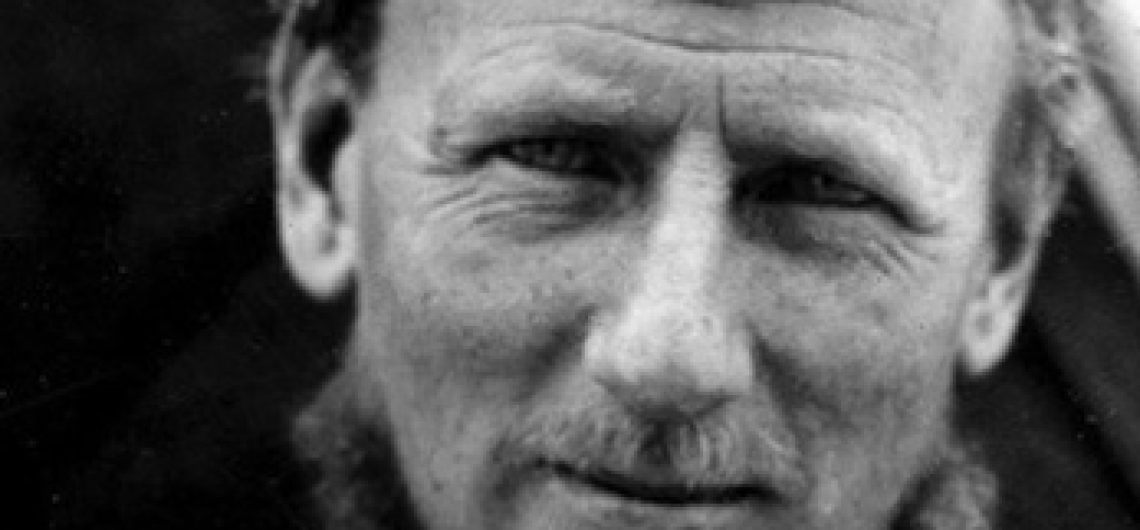Tony Smythe discovered surprising secrets while researching his father, Frank Smythe, an Everest pioneer from the 1930s also regarded as the true and first mountaineer. Unexpectedly, hidden within Frank’s diary was the revelation of his finding of George Mallory’s body in 1936. This discovery sheds light on the mysterious disappearance of Mallory and his climbing partner, Andrew “Sandy” Irvine, nearly 30 years before Tenzing Norgay and Sir Edmund Hillary conquered Everest. The uncovering of Mallory’s remains in 1999 by American mountaineer Conrad Anker led to the exposure of a mysterious past. Frank Smythe’s discovery of a body at a high altitude reminded him of a personal experience with a mountaineering accident. This incident, where he located the remains of two Oxford undergraduates in the Alps, left a lasting impact on Smythe. Despite his interest in such incidents, Frank kept the discovery on Everest hidden, wary of the public and press sensationalizing the finding. His drive and passion for climbing the mountain, especially after a hallucination-inducing attempt in 1933, defined his life’s mission. Furthermore, Tony Smythe uncovered another hidden secret regarding his father’s relentless pursuit of Everest. Despite facing obstacles from the Mount Everest Committee, including doubts about future expeditions, Frank devised a plan for a solo attempt in 1935. This revelation showcased his determination and willingness to risk everything for the chance to conquer the peak. However, such actions would have jeopardized his reputation and relationships within the mountaineering community. Through his book titled “My Father, Frank,” Tony delves into the complex nature of Frank Smythe’s character. He explores his father’s relationships, controversies, and untold stories, painting a vivid picture of a man driven by ambition and a thirst for adventure. Frank’s legacy and his views on modern Everest expeditions serve as a reminder of his unique perspective on mountaineering and life.
Was Frank Smythe the first person to discover George Mallory’s Body?
The frozen body of the renowned explorer George Mallory was seen by a fellow adventurer on the slopes of Mount Everest many years prior to its official discovery, as revealed by a forgotten diary. Frank Smythe, who made multiple attempts to summit the world’s tallest peak in the 1930s, detailed his observation of what he believed to be Mallory and his companion Andrew Irvine through a strong telescope in 1936. Smythe’s account is the sole instance of Mallory’s remains being spotted before they were eventually found by Conrad Anker in the year 1999. This observation was documented in a letter addressed to Edward Norton, the leader of the 1924 expedition during which Mallory went missing while attempting to reach the summit. Tony Smythe, Frank’s son, stumbled upon a copy of this letter within his father’s diary while working on a book about his father’s adventurous life. The letter mentions, “I was surveying the cliff face from our base camp using a powerful telescope last year when I noticed something odd in a ravine beneath the rocky ledge. Although it was quite a distance away and appeared very small, I have excellent eyesight and am confident it was not a mere rock.”
The object was located right at the spot where Mallory and Irvine would have tumbled if they had continued rolling down the loose scree slopes. Mr. Smythe felt compelled to investigate this area as it was just above where a previous expedition had discovered an ice axe, believed to have been left behind at the site of a tragic accident. Although Mr. Smythe, a well-known writer, documented his expeditions extensively, he deliberately omitted any mention of the sighting of Mallory. In a letter to Mr. Norton, he emphasized that this information should not be shared to avoid stirring up media speculation. The enduring mystery of whether Mallory and Irvine reached the summit of Everest before meeting their fate remains one of the most famous tales in modern mountaineering. Sir Edmund Hillary and Tenzig Norgay were the first climbers to successfully reach the summit in 1953, using supplemental oxygen. During his 1933 expedition, Mr. Smythe ascended to 28,200ft, just shy of the summit by less than 800ft, before having to turn back. Despite his efforts, including a sighting of Mallory’s remains during a 1936 expedition, he never achieved the same summit success.
Frank Smythe’s unwavering fascination with the tallest peak on the planet, Mount Everest, was evident in his diary entries. He regarded the conquest of Everest as a lifelong mission. Throughout the 1930s, Smythe participated in all three British expeditions to the majestic mountain. His mountaineering prowess was established after his successful ascent of the 7756-meter-high Kamet in 1931, placing him among the elite climbers of his era. On June 1, 1933, he equaled the altitude record on Everest, reaching approximately 8570 meters on the North Face, a point previously reached by his fellow countryman Edward Felix Norton in 1924. In his writings, Smythe conveyed the overwhelming exhaustion he felt when the summit loomed just 1,000 feet away. Despite the physical proximity, he described an insurmountable feeling of weariness separating him from his goal. Climbing without the aid of bottled oxygen, Smythe encountered hallucinations on his descent. He believed he saw a companion to share his cake with and observed two peculiar objects floating above him. These surreal experiences were detailed in his book “Camp 6.” Interestingly, Smythe revealed a remarkable and intriguing discovery he allegedly made during his subsequent Everest expedition in 1936: the possible sighting of George Mallory’s body. The disappearance of Mallory and Andrew Irvine, who vanished during a summit attempt in 1924, remains a mystery to this day. Frank Smythe’s accounts shed light on the daring spirit of exploration and the enigmatic aura that surrounds Mount Everest.
All alone on steep and dangerous slabs, the climber thought back to the summit that seemed so close yet so far away. The rocks piled high in a chaotic jumble, their edges a faint yellow against the deep blue sky. A white misty plume flowed silently from the crest. It was June 1, 1933, and Frank Smythe had reached an incredible height, the highest ever climbed at that time. However, it would be two more decades before anyone would reach the summit. Two grueling nights in the treacherous “death zone” had left him exhausted and weakened from the high altitude. As he descended towards Camp Six at 27,400 feet, he came across his fellow climber Eric Shipton, who was too sick to continue. Feeling drained and hallucinating from lack of oxygen, Smythe had a strong sensation of a presence with him, so much so that he shared his mint cake hallucinating his companion was there. He then noticed two strange, dark objects hovering above him, one with underdeveloped wings and the other with a beak-like projection. These objects seemed to pulsate with a disturbing semblance to life. Taking a moment to compose himself, Smythe went through the names of the peaks around him. Looking back, he realized the objects had disappeared, leaving only a drifting mist behind.
He had recently discovered the tangled remains of the highest camp from the 1924 expedition. The scene was described as incredibly desolate and melancholic. Thinking about Mallory and Irvine, the last individuals to rest there, he pondered on their fate. Could Everest reveal their whereabouts? Was it possible that they had reached the summit? Although he never did, Smythe believed that Everest would ultimately release him. He expressed the relief of those who had given up, emphasizing that the final 1,000 feet of Everest were beyond human limitations. Despite his belief that climbing Everest without oxygen was feasible, the first successful oxygen-free climb didn’t occur until 1978, using the less challenging South East Ridge. By the 1970s, advancements in equipment and techniques significantly improved. “Camp Six” stands out as a remarkable recollection of the early climbing endeavors, sharing the full epic tale with the British audience and solidifying his standing as a distinguished mountaineering author. Born in 1900 to a timber merchant in Maidstone, Smythe had a secluded upbringing and battled frequent illnesses. Initially trained as an electrical engineer – a profession imposed upon him by his family – he later joined the RAF, only to be discharged due to health issues. His fascination with climbing likely began at the age of seven when he beheld the Alps for the first time. Viewing mountains as a possible escape from unfulfilling careers, his pivotal moment arrived in 1927 when he pioneered a daring ice climb on Mont Blanc. Another new route on the same peak was established a year after, leading to an invitation to participate in the 1930 international expedition to Kangchenjunga, the world’s third tallest mountain.
The expedition ended in tragedy with the death of a Sherpa, but it marked the beginning of Smythe’s successful career as a professional mountaineer. His book, The Kangchenjunga Adventure, became a bestseller after detailing the 1930 international expedition led by Gunther Dyhrenfurth to climb Kangchenjunga, one of the first attempts on an 8000m peak. Despite facing challenges with porters during the trek, the team was met with immense difficulties while attempting the Northwest Face’s ice cliffs, resulting in an avalanche that claimed the life of Sherpa Chettan. However, they achieved the first ascent of Jonsong Peak at 7483m and Nepal Peak at 7154m, giving Smythe reasons to celebrate by champagne and music. Following his success, Smythe led his expedition to the Garhwal region in 1931, where they made the first ascent of Kamet at 7756m. His account, Kamet Conquered, documented this journey, which contributed to his reputation as one of the world’s premier mountaineers. Over the years, he led multiple expeditions to Everest in 1933, 1936, and 1938, with his highest recorded altitude reaching 8565m in 1933. Despite setbacks such as his partner falling ill and experiencing hallucinations while descending, Smythe cemented his legacy in the mountaineering world with his daring climbs.
Smythe revisited Everest on two more occasions, in 1936 and 1938. However, neither trip was able to match his previous height record set in 1933. During World War II, he instructed troops in mountain combat and spent time in the Rocky Mountains with the Lovat Scouts. Smythe also ventured back to the Himalayas twice to explore the remote Lloyd George range. Although not widely discussed, his notable achievement was the altitude record, detailed in his book “Camp Six”. One of his top works is “The Valley of Flowers”, chronicling a three-month journey to Garhwal to collect wildflowers. He solidified his reputation by conquering Mana Peak, Deoban, and Nilgiri Parbat. Unfortunately, his return to the Himalayas in 1949 was cut short due to contracting cerebral malaria in Darjeeling, resulting in his passing in London shortly before his 49th birthday. Tenzing Norgay, who had shared climbs with Smythe during the 1930s Everest expeditions and was present in Darjeeling when he fell ill, recounted his decline in the autobiography “Tiger of the Snows”, hailing Smythe as “the most famous of all Himalayan mountaineers”. Though his renown has faded compared to his contemporaries Shipton and Bill Tilman, his legacy deserves a resurgence. Now, many may ponder how Smythe’s story impacts the mystery of Mallory and Irvine’s summit quest on Everest. To uncover the truth, one must delve into Smythe’s latest biography or better yet, pick up “The Six Alpine/Himalayan Climbing Books”, a hefty read that promises hours of entertainment at home or out on an adventure. Weighing approximately 1½ kg, it may even serve as training for aspiring mountaineers.
![]()



Comments